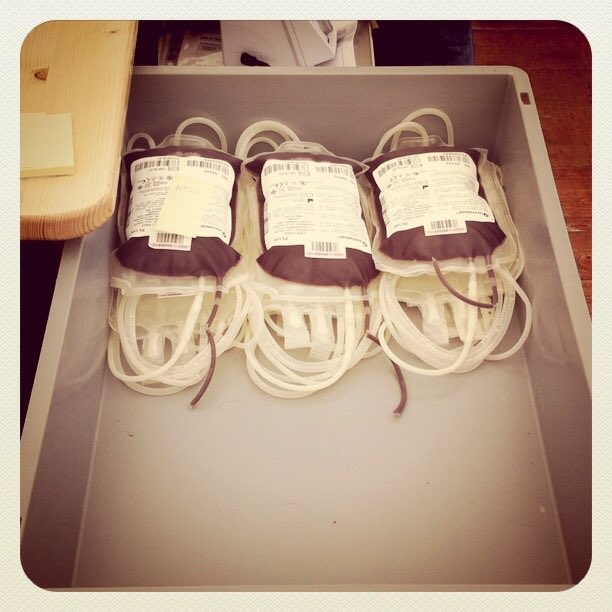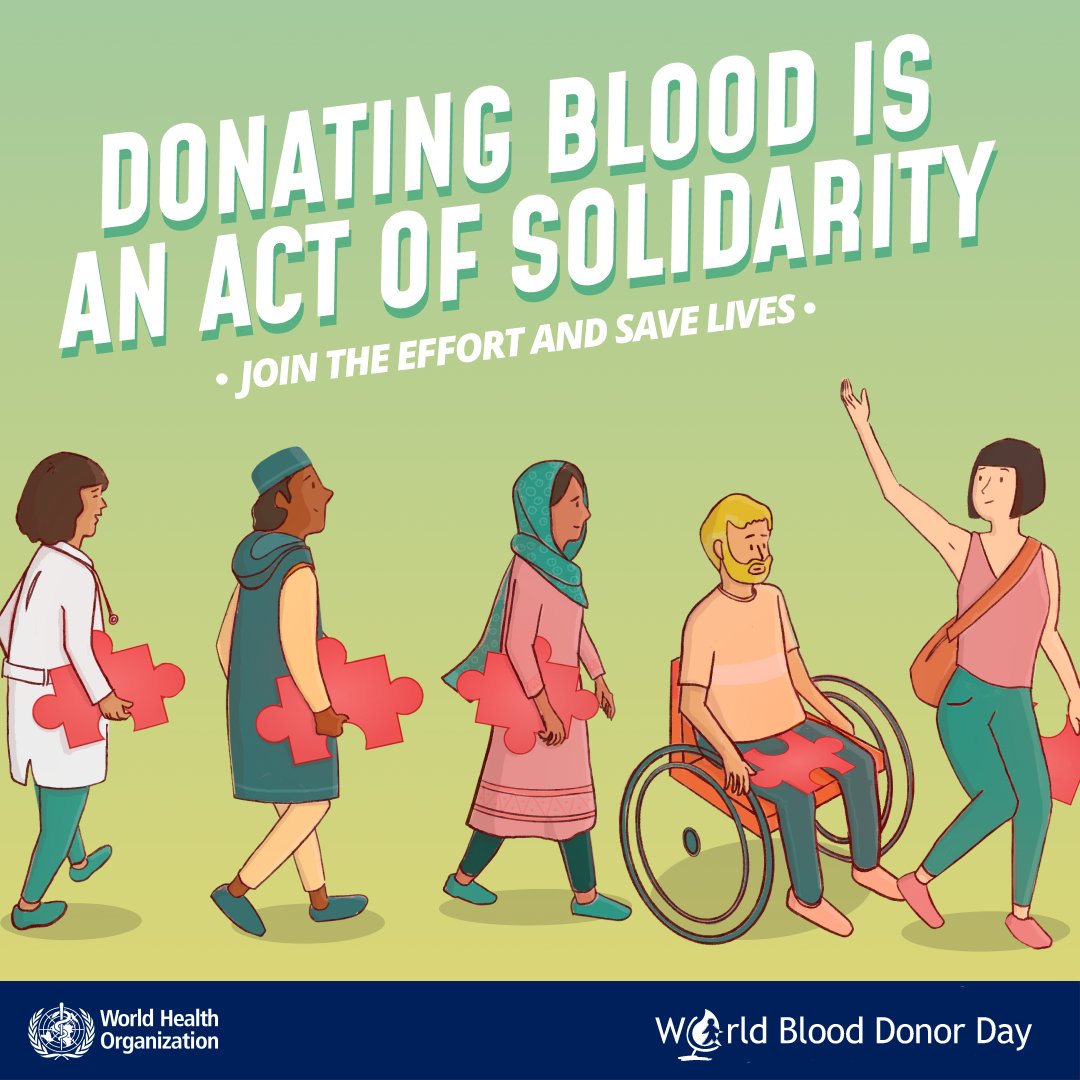
🩸 Today is #WorldBloodDonorDay 🅰️🅱️🅾️🆎
Safe blood help treat people suffering from a range of diseases, of from injury from accidents, natural disasters and armed conflict bit.ly/GiveBlood22
#GiveBlood🩸
Safe blood help treat people suffering from a range of diseases, of from injury from accidents, natural disasters and armed conflict bit.ly/GiveBlood22
#GiveBlood🩸
🩸 The need for blood is universal. However, access to it is limited – especially in low- & middle -income countries. Shortages in these countries impact women and children more as they tend to be the ones requiring blood the most. #GiveBlood
bit.ly/GiveBlood22
bit.ly/GiveBlood22

🩸 In low-income countries, up to more than half of blood transfusions are given to children below the age of 5.
In high-income countries, the most frequently transfused patient group is over 60 years of age. #GiveBlood bit.ly/2I0rX7l
In high-income countries, the most frequently transfused patient group is over 60 years of age. #GiveBlood bit.ly/2I0rX7l

"When I know my blood has helped save another person, I feel very useful to the society."
bit.ly/GiveBlood22
#GiveBlood
bit.ly/GiveBlood22
#GiveBlood
🩸 From 2008 to 2018, blood donations from voluntary unpaid donors increased by almost 11 million. However, 54 countries still collect more than 50% of their blood supply from family/replacement or paid donors #GiveBlood bit.ly/2I0rX7l 

Most people can #GiveBlood if they are in good health.
Other criteria you need to fulfil to quality as a donor:
🩸You are aged between 18 and 65
🩸You weigh at least 50 kg
More details: bit.ly/3NtZyqi
Other criteria you need to fulfil to quality as a donor:
🩸You are aged between 18 and 65
🩸You weigh at least 50 kg
More details: bit.ly/3NtZyqi

WHO recommends that all blood donations be screened for infections prior to use.
Screening for HIV, hepatitis B, hepatitis C and syphilis should be mandatory bit.ly/2I0rX7l #GiveBlood
Screening for HIV, hepatitis B, hepatitis C and syphilis should be mandatory bit.ly/2I0rX7l #GiveBlood

• • •
Missing some Tweet in this thread? You can try to
force a refresh













